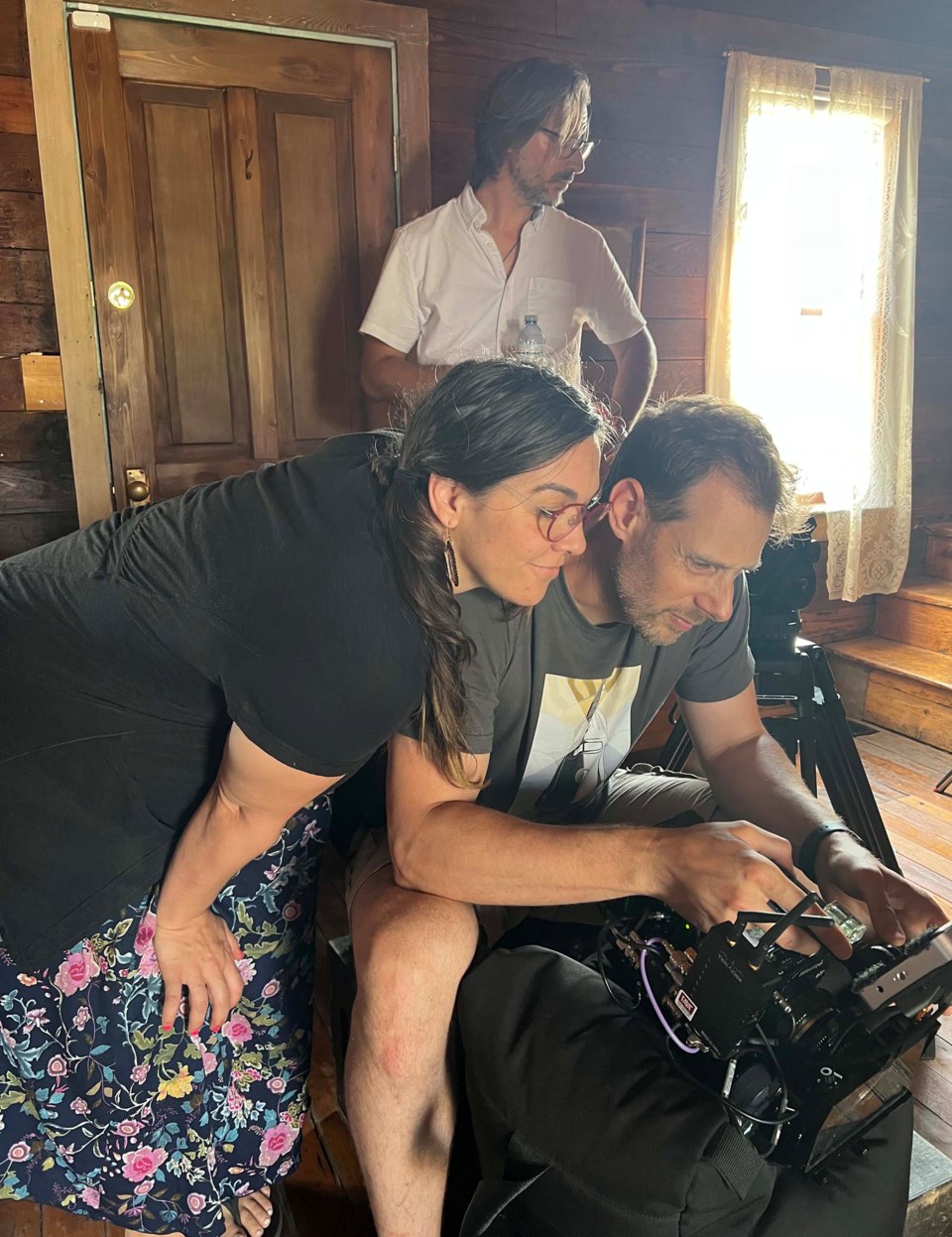Last week was blistering, hot especially for the people working inside Chevigny House and Cunningham House, two of St. Albert’s heritage houses. Sweat glistened on people’s skin and bottles of cold water were quickly gulped.
But the people stepping in and out of the heritage houses in the pastoral location on Meadowview Drive weren’t cleaners, restorers, tour guides, event organizers, or anyone you’d expect to see.
They were a 20-person cast and crew shooting Suitable, a 15-minute short about one Inuit woman's life during the 1930s. Additional filming takes place at Chesterfield Inlet, located on the western shore of Hudson Bay in Nunavut.
“It’s the idea that Inuit are not suitable to live here. They don’t fit,” said producer Katrina Beatty.
Suitable is the brainchild of writer-director Lindsay McIntyre, an Edmonton-raised filmmaker of Inuit-Scottish ancestry now living in Vancouver. A film artist with an MFA from Concordia and a BFA from the University of Alberta, she specializes in making award-winning 16mm films. She also teaches at Emily Carr University of Art and Design.
“I do feel it’s a personal story. A lot of Lindsay’s art deals with ancestral trauma and the way we carry it in our DNA. She’s had to take charge of her own cultural learning,” Beatty said.
Growing up, McIntyre forged a special connection with her great-grandmother Kumaa’naaq. Suitable is the Inuit woman’s life in the north, and her subsequent journey to Edmonton with her husband Ray, an RCMP officer.
McIntyre first developed a spark of curiosity and became passionate about her culture and heritage at the age of 13, when Ray told stories of the north and some hinted at the discrimination and racial injustice faced by the Inuit population.
“He said, ‘You’ve got good Inuit blood running through your veins. Don’t forget that’,” McIntyre said. “I identified with Kumaa’naaq’s story. It’s my duty to tell this story. If we don’t tell stories, they die. I can use my skills as a filmmaker to tell this story.”
A woman of great strength, Kumaa’naaq was one of the few Inuit who spoke both Inuktitut and English, and was hired by the RCMP as an interpreter. However, her papers list her as a “servant.”
“She was able to soften the blows to the Inuit from the RCMP, and expressed the needs of her people to the RCMP, but she was considered a servant — not a special constable,” McIntyre said.
Kumaa’naaq’s life journey to Edmonton would take on unexpected twists and turns, including tensions between herself and a daughter, who viewed the world in a different light.
Brenda Amak&ak Putulik, a Nunavut artist who carries herself with pride, dignity, and a tinge of ferocity, is cast as Kumaa’naaq.
“I agreed to do this to show the history of what it is to be a Canadian as a whole in its complexity and diversity in Canada,” said Putulik. “I wanted to show what was considered civil back in that day, what was deemed acceptable everywhere in Canada.”
From stories told by elders, she describes how white men journeyed across the north to claim land for the crown, yet in many accounts were unable to survive the harsh environment. In their arrogance, the men did not ask for assistance from the Inuit, who survived 10,000 years of hardship yet were stereotyped as “uncivilized.”
“The Inuit perception was these are toddlers. They don’t know how to hunt, but they can kill,” Putulik said.
In addition to Putulik, three other actors are cast: Naomi Natseck, Lindsay Robinson, and Benjamin Blyth.
Funded by a Canada Council Grant, Suitable is a low-budget piece of family history McIntyre hopes to turn into a dramatic feature film. It is designed as a festival entry to sharpen awareness, and as a springboard to solicit the big funding necessary to produce a feature film.
Film organizers approached the St. Albert Arts and Heritage Foundation after viewing a listing in the Alberta Film Library for potential locations. Working with Arts and Heritage, details were firmed up in three weeks. So, what does this ultimately mean for the city?
“This is a wonderful opportunity to showcase the heritage site and all the heritage buildings recently restored. It will create awareness and hopefully lead to more opportunities,” said executive director Ann Ramsden.
In the grand scheme, the economic impact to the city is minimal. However, Ramsden sees the information coming from it as a valuable tool added to exhibitions and programs already established through Arts and Heritage.
“What’s important is this is an Indigenous story and it is being told by the Inuit. It is their perception, one that has been often overlooked in the past. It’s an Inuit story told by an Inuit writer from a personal point of view. It’s about understanding history from an Inuit perspective. It’s their story to tell.”




